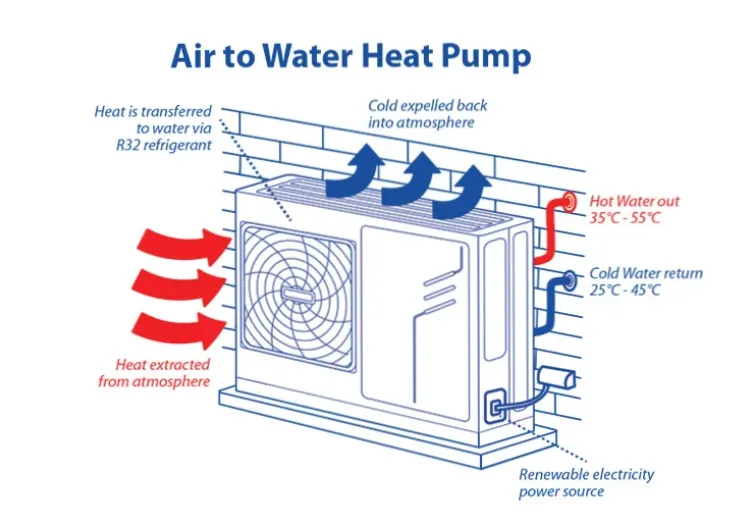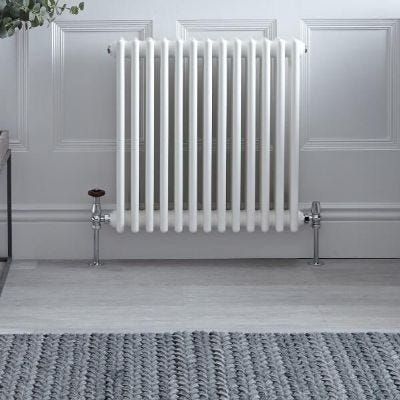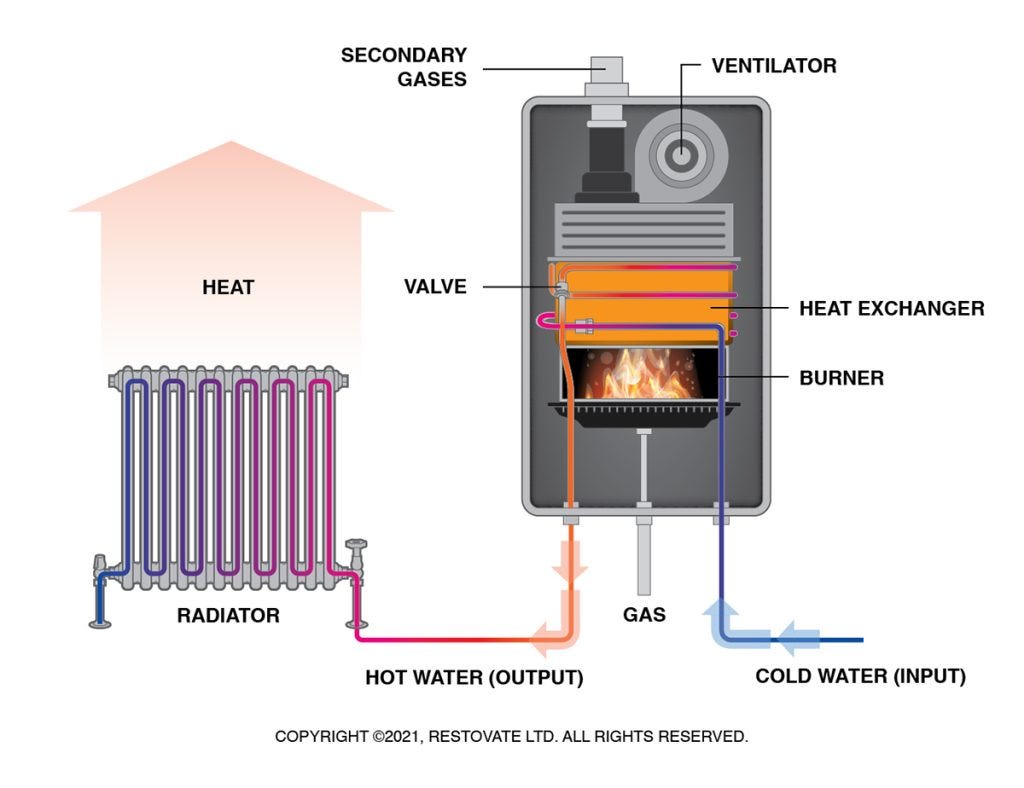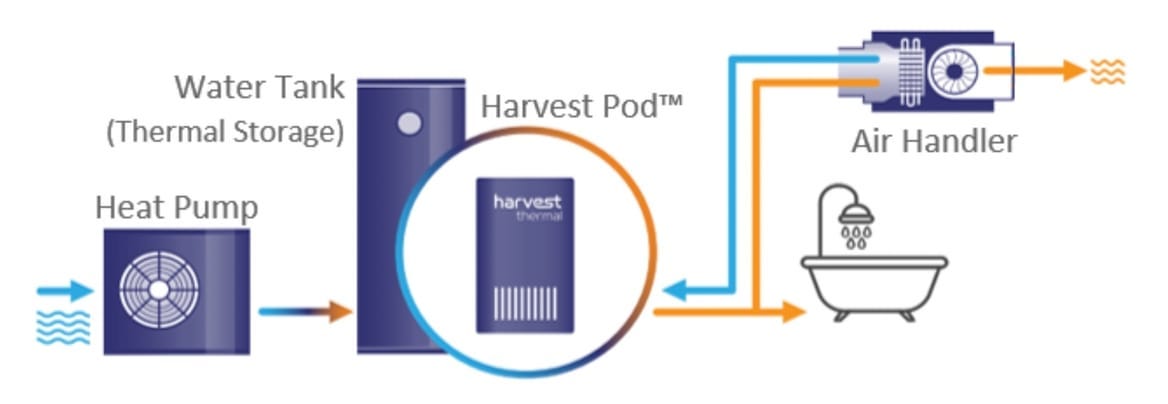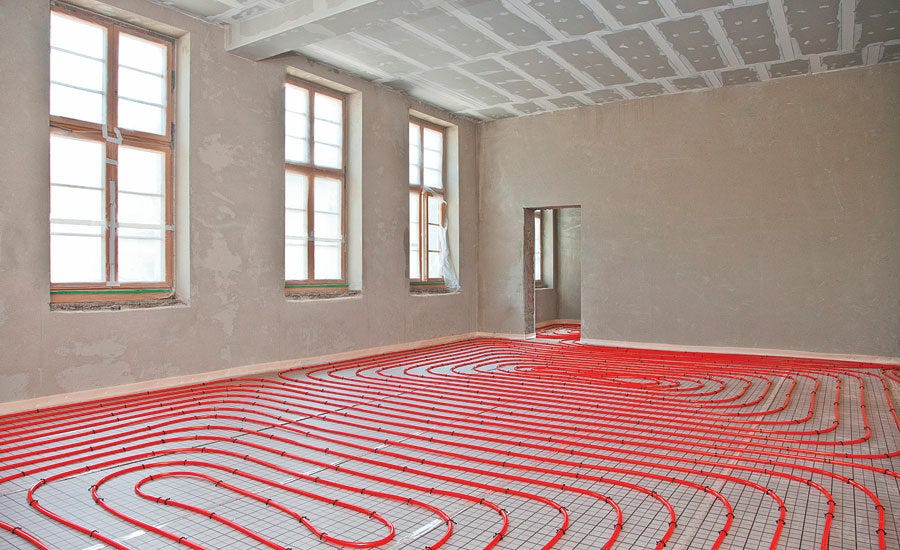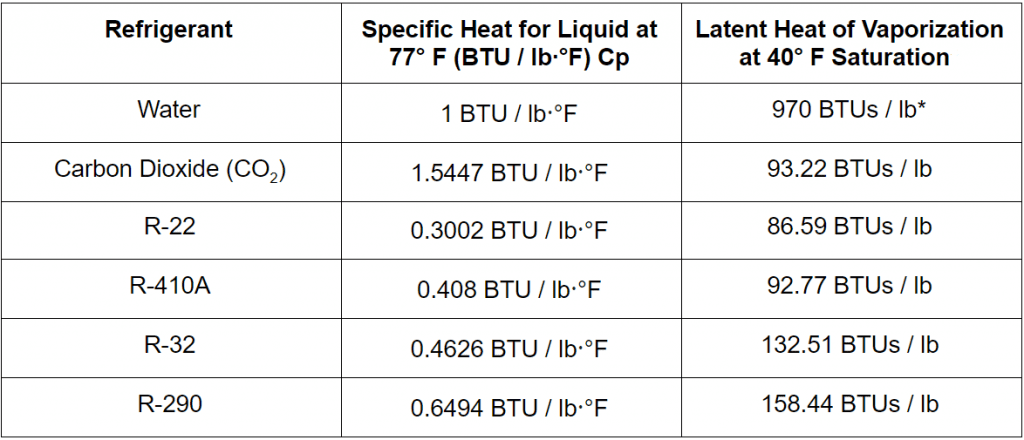TLDR
Air-to-water heat pumps cannot do A/C well with your existing radiators. Therefore we are hesitant to recommend them for retrofits.
Introduction
The heat pump umbrella is wide and expansive. While Laminar Collective’s research primarily focuses on air-to-air (A2A) systems, this article will discuss air-to-water systems.
I will refer to them in this article as: air-to-water heat pumps (A2WHPs).
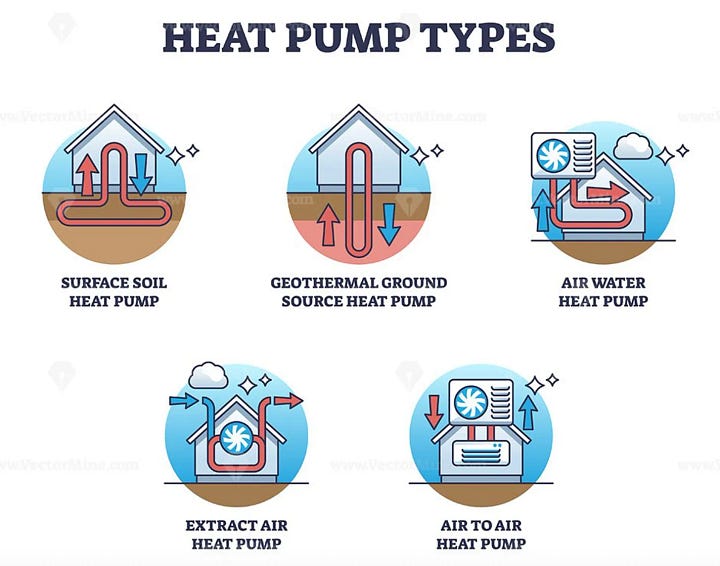
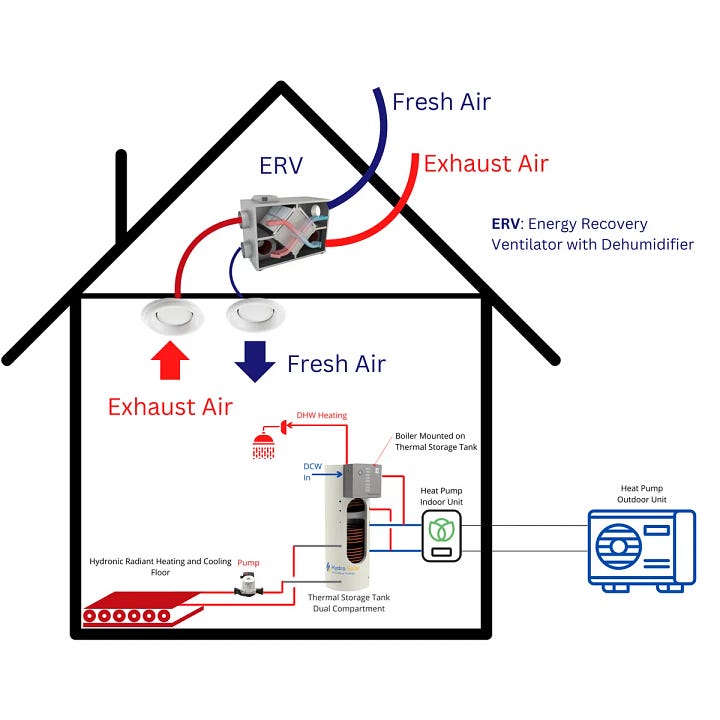
This system is more commonly found in Europe but has piqued the interest of some of our readers. Here’s what we know.
How They Work
I trust you know and understand how air-to-air heat pumps work. If you need a reminder or introduction, watch this.
The air-to-water system is very similar to the air-to-air, but the heat is moved throughout the system using water instead of refrigerant. Gas boiler systems also operate this way. Water is an excellent medium for thermal transfer, so these systems are very effective.1
Are they compatible with my existing radiators?
As noted, gas systems move heat around using water. In the Boston Metro Area there are a lot of radiators. We wondered if it was possible to just swap your old gas system out with an A2WHP and reuse your old system’s radiators.
The idea isn’t entirely far-fetched. Technically, heat pumps can use radiators to disperse heat. However, there are a couple of limitations.
First, most oil and gas systems operate with the water lines sitting around a temperature 180° F. A2WHP systems are often limited to lines under < 130°F.
The lower flow temperatures that come with heat pumps require a larger surface area to deliver the appropriate amount of heat. The radiators in your gas heating system are likely sized for lines operating at a higher average temperature than typical for an A2WHP. With the same amount of radiators and lower temperature lines, you won’t receive enough heat in your house.
If you already have massive radiators maybe this option is for you, but in most cases you would need to buy extra.2 Also in the Boston area, who has enough space in their house for all that. For houses with compact spacing or old radiators another setup is probably the way to go.
Second, if you have cast iron radiators you will likely need to replace them completely as cast iron does even worse at heating with low-flow temperatures.
Many older houses in MA have cast iron radiators.
Third, from an energy standpoint radiators are not the most efficient method of delivery of heat for A2W heat pump systems.
Under the floor systems are ideal in many cases because they operate at a lower temperature to evenly move heat around the room. This lower temperature is in combination with the more evenly distributed heat (floor heating spreads out across the room) more efficiently heats an area in combination with a heat pump.
Finally, radiators are even less ideal for cooling. Point blank it wont work.
There’s a bit of a science lesson here–radiators rely on convection, cool air doesn't convect in the same way so it will just sink to the ground instead of permeating throughout the room—but I’ll keep it simple. Radiators are designed to heat not cool, and if the radiator got too cold it would start to draw condensation from the air. There’s no system on a radiator able to handle the procured condensation the way there is with mini splits, air handlers and other cooling systems. So a cooling radiator would get all wet (yuck) and rusty eventually. You’d also likely see some water damage on your floors.
I'll end this section with is a question:
Why invest in a heat pump if you can only use half of the system?
In a climate thats only getting hotter I’d hate for anyone to have an underutilized system. The good news: there are other options besides radiators that work with A2W!3
Systems that can cool and heat!
Air handlers (similar to A2A units but using water instead of refrigerant) and/or
Fan coil units (which have fans to force air over cold/hot coils)
Radiant floor heating and cooling systems (chilled/heated water in floors or ceilings, with humidity control)
Humidity control is key here. Additionally in older systems condensation controls must be added otherwise you might become victim to mold inside your systems.
We suggest you invest in one of these options if you really want an A2WHP system that heats and cools. I am personally team radiant floors, because who doesn’t want warm floors in the winter, but those can also see operational challenges in more humid climates.4
Brands & Performance
Brands that have MassSave approved A2WHP models include Midea, Samsung, LG, Chiltrix, Taco Comfort Solutions, and SpacePak.
Many brands that dominate in the A2A market, such as Daikin and Mitsubishi, have A2WHPs but seem to not have submitted them for approval on MassSave.
On the flip side, many brands with MassSave approved A2WHPs are not in the A2A space. SpacePak, one of these companies, is a leader in the A2WHP innovation system and was the manufacture to bring the system to North America in 2011. But they don’t produce any A2A pumps.
Reasons to use air-to-water
A2W pumps can also fulfill most of your households demand for hot water. Pretty awesome right! A2A systems cannot do this and you end up having to buy a heat pump water heater as well if you want to go all electric.
They are way more energy efficient! As shown above, it takes more energy to move around air, and refrigerant especially as ductwork/lines get longer. Water is the easiest of the fluids to move around!5
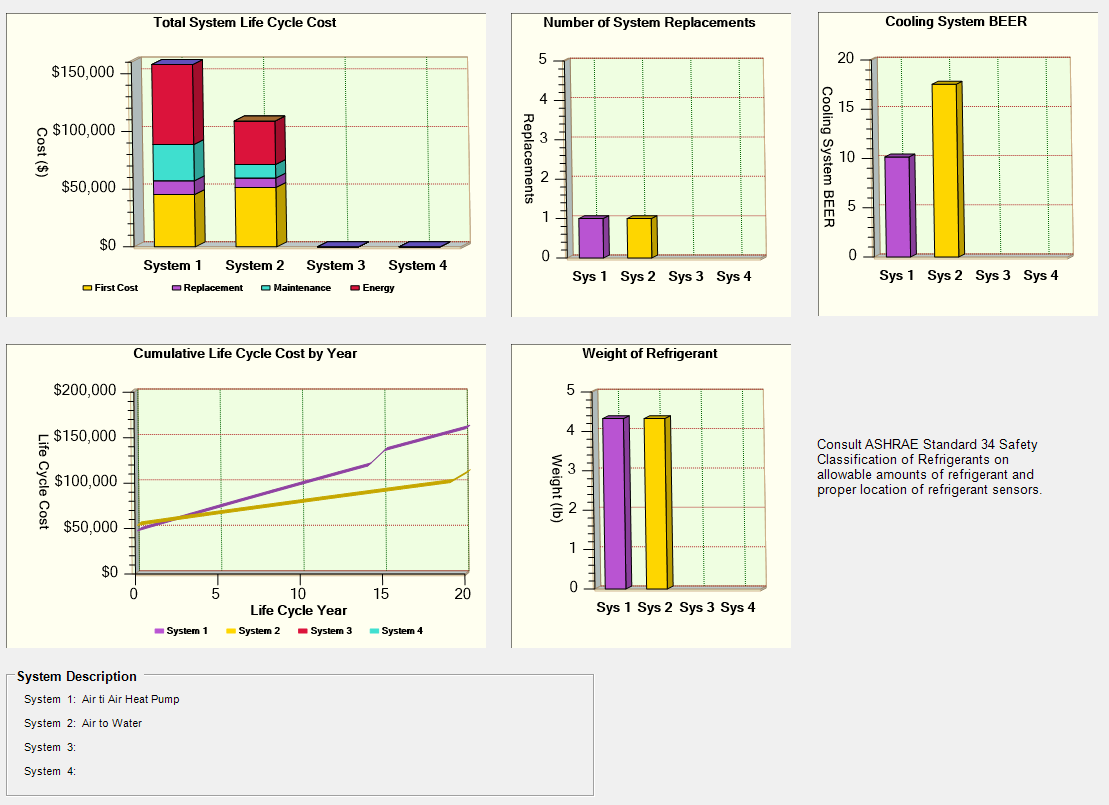
This image comes from a comparative analysis done by HydroSolar. It can be cheaper over time! While A2W systems usually have a higher upfront install cost, they can offer cost savings over time because they use less energy and require less maintenance.6
Mass Save
For those of you excited about this opportunity under MassSave you can qualify for the heat pump rebate of up to 10k to put towards an A2WHP system. This install has the same regulations and limitations as A2AHP.
On the approved equipment list are 61 configurations, a stark contrast to the 160k configurations of A2A pumps. The local approved installers list is also much smaller. On my first pass of installers that might do A2A for a local zip code (02140 in Cambridge) there are 907 approved contractors in the area. For A2W that number drops to 300.
Furthermore if you spend time on Green Building Forums, HVAC sites, and other spaces of Q&A like Reddit, you’ll notice that people feel they are constantly being pushed away from A2W systems and towards A2A ones. I suspect thats partially due to installers overall being more comfortable with the latter.
Why are these systems so common in Europe?
Europe is leading the world in growth in the heat pump market. Many governments have policies that support the phasing out of gas boilers, a continental MassSave if you will. In England they will pay you to replace your boiler with a heat pump! Heat pumps are very desirable due to their energy efficiency and affordability compared to other systems. They also reduce reliance on imported fossil fuels which has been a point of importance for much of Europe as of recent.
Overall the European market is a heat pump stronghold for all models not just A2W. Market reports project a continued growth in that region.7
Conclusion
To sum it up, I’d say when it comes to your old house stick with air-to-air. Unless you are tearing down that old house and starting from scratch because then you can design your system accounting for condensation. It’s also probably just easier on the contracting side of things to find people to work with who are experts in A2A. So that’s something to think about as well.
References
Hydro Solar: Air to Water or Air to Air Heat Pump?
Best Heating: Can you pair radiators with heat pumps?
Termp: Do heat pumps work with radiators?
Green Building Advisor’s Community Q&A Section
r/hvacadvice
The awesome thing about A2WHPs is that water is a much better medium than air for heat transfer. It’s physical properties, which make it far more efficient at absorbing, storing, and moving heat. It can hold a lot more energy per unit of mass than air can, and it’s way denser than air. These two factors mean that each drop of water has way more ability to store heat than the same equivalent amount of air. Water is also faster at conducting heat. Overall when you use water you get quicker, more dramatic results. Maybe that’s why Europeans love it so much!
There are claims that with the right insulation older radiators can properly heat with low flow temperatures, but we’re questionable on if this would work well in the specific market of Massachusetts where buildings are old and poorly insulated. The amount and cost of retrofits required to achieve the desired level of insulation make it seem like getting a new system would be the better deal. Trust us—we’ve looked at window replacement costs and it gets super ugly fast.
I guess you could install just the pump in the winter and then wait until the summer to add in an appropriate cooling system splitting up your cost burden. However, at that point you’d be dealing with a summer surge in prices.
Say you already have a hydronic system with gas, can that be a simple replacement? Not necessarily. Unless the system was previously set to cool (unlikely with a gas heating lines), the lines also are not provided with the needed condensate pipe and setup to avoid mold growth or other issues. These systems will also need to be retrofitted resulting in higher costs.
“For a 350 Linear Feet of ducting, a forced air system will consume more power for transporting energy produced by the heat pump to every room in the house. The excess energy required is equivalent to 15% of annual energy consumed by heat pump's compressor.” -Hydronics Industry Alliance.
An important thing to note is this upfront cost can be significantly higher in a retrofit vs a new build. This might be one of the reasons why A2W systems are not super popular in Massachusetts where there is not as much new housing stock and most of the homes are older.
The truth is that because the market is much bigger in Europe, there are just more options. A2AHPs are also very popular and common in Europe. The US market is just behind with Europe having a significant head start in the A2W section.





